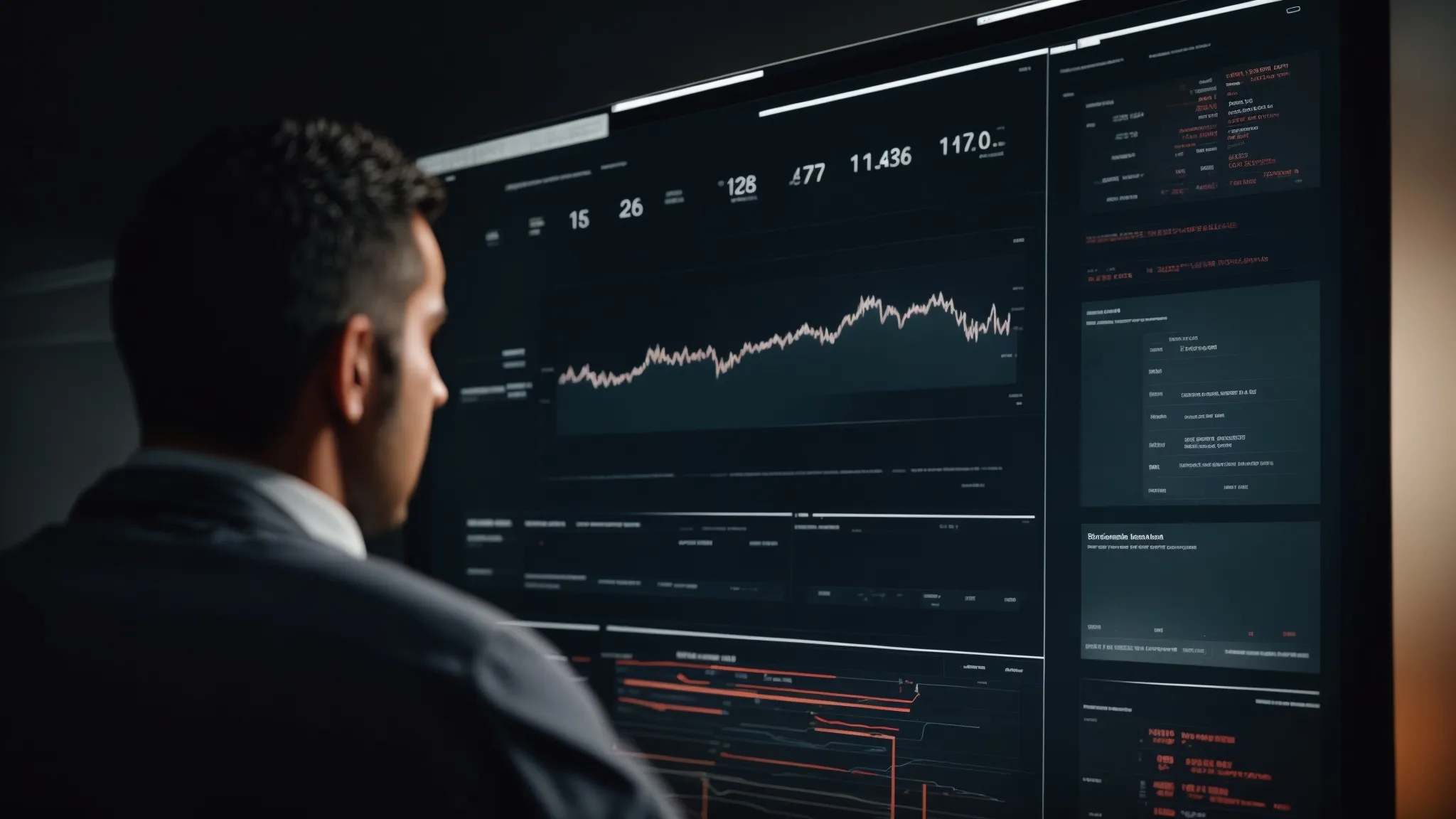Mastering Technical SEO: Essential Tips for Optimization
Technical SEO: The Definitive Guide Technical SEO stands as a foundational pillar in the digital fortress of search engine optimization, a crucial aspect that determines how search […]
Technical SEO: The Definitive Guide
Technical SEO stands as a foundational pillar in the digital fortress of search engine optimization, a crucial aspect that determines how search engines perceive, crawl, and index a website.
Ensuring a website meets the meticulous standards of search engines involves a deep dive into site architecture, speed, and security—components that collectively influence a website’s visibility to potential customers.
LinkGraph’s expertise in this domain, particularly through its advanced SEO tools and services like Search Atlas, guides companies in navigating the complex terrain of technical SEO.
Meticulous attention to these details ensures that the user’s journey throughout a website is seamless, thereby improving the site’s authority and search engine ranking.
Keep reading to unravel the sophisticated elements of technical SEO and how to adeptly implement proven strategies to gain a competitive edge.
Key Takeaways
- Technical SEO Is Critical for Enhancing a Website’s Search Engine Visibility and User Experience
- LinkGraph’s SEO Services Cover a Wide Range of Techniques, From Site Speed Optimization to Structured Data Implementation
- Regular SEO Audits Are Essential in Identifying and Resolving Issues to Improve Site Health and Performance
- Adapting to the Evolving Landscape of Search, Including Voice Search Optimization, Is Necessary for Maintaining Online Relevance
- Proactive Adaptation to New Trends and Technologies Is Key to Successful Technical SEO Strategies
Understanding the Core Aspects of Technical SEO

In an environment where digital presence determines business success, Technical SEO has emerged as the bedrock of online visibility.
This intricate facet of Search Engine Optimization ventures beyond mere keywords and content design to ensure that a website meets the technical criteria set by search engines.
It encompasses an array of responsibilities including, but not limited to optimizing the site for crawlers, enhancing indexing functions, and adapting to ever-evolving algorithms.
Understanding Technical SEO is crucial for every site architect and content strategist as it directly influences how search engines perceive and prioritize a website’s content, ultimately dictating its performance in search results and its user experience.
With a comprehensive SEO Audit and carefully implemented strategies, Technical SEO serves not just as a troubleshooting checklist but an ongoing commitment to maintaining digital excellence.
Grasping the Definition and Scope of Technical SEO
Technical SEO stands at the crossroads of cutting-edge web development and the intricate requirements of search engine algorithms. It is a multifaceted practice that ensures a website’s backend structure operates seamlessly, optimizing its capacity to communicate effectively with search engine bots, thus securing a robust digital footprint.
This advanced technical sphere covers a wealth of critical aspects, from site speed optimization to the implementation of a robust XML sitemap: the blueprint guiding search engines through a site’s content hierarchy. Its scope extends to the minutiae of meta tags, schema markup, and site security, underpinning the framework that supports a website’s search engine ranking potential:
| Technical Element | Relevance | Impact on SEO |
|---|---|---|
| Site Speed | Impacts user experience and site stickiness | Influences search engine ranking and visitor retention |
| XML Sitemap | Assists search engines in indexing content | Facilitates efficient crawling of web pages |
| Schema Markup | Enables search engines to understand website context | Enhances visibility in search results through rich snippets |
| Site Security (SSL) | Secures user data and fosters trust | Affects user safety perception and impacts Googlebot’s trust |
Recognizing the Roles of Crawlers, Indexing, and Algorithms
Crawlers, or search engine bots, hold the key to a webpage’s entry into the vast digital library of the internet. Their role is to traverse the web, meticulously evaluating and cataloging information across countless sites: a pivotal process that signals to search engines what content is available for indexing and how it should be accessed by users.
- Crawlers navigate the web to discover and reassess content.
- Indexing compiles and stores data for easy retrieval by search engines.
- Algorithms analyze indexed information to determine page ranking in search results.
Indexing and algorithms work in tandem to sort and rank web content, a process dictated by complex formulas designed to align with user intent. These algorithms are shaped by myriad factors, influencing visibility and emphasizing the need for websites to maintain alignment with search engine best practices to ensure optimal performance and user experience.
Assessing the Impact of Technical SEO on Site Performance
The efficacy of a website is inextricably linked to its technical SEO framework; the efficiency with which a site loads, the clarity of its sitemap, and the robustness of its back-end architecture are pivotal in shaping its search engine standings. It is the meticulous attention to these technical elements that can catapult a website from obscurity to prominent visibility, enhancing not just rankings but also the ever-critical user retention and engagement rates.
LinkGraph’s SEO services exemplify this impact through their sophisticated approach to optimizing site performance. Their meticulous backlink analysis and tailored SEO audits identify and rectify technical obstacles, enabling websites to swiftly communicate with search engine crawlers. This results in a digital presence fine-tuned for peak search engine visibility, securing a competitive edge in the fast-paced digital marketplace.
How to Lay the Groundwork for Effective Technical SEO

Establishing a robust Technical SEO Strategy requires a methodical approach, commencing with the bedrock of secure hosting.
A secure server not only shields a site from malicious threats but also lays the cornerstone for search engine trust and user confidence.
Next, the creation of a structured, crawlable site architecture ensures that search engine crawlers can navigate and index the site’s content with simplicity and precision.
LinkGraph’s dedicated technical SEO services prioritize these foundational elements, realizing that the harmony between a website’s infrastructure and search engines is essential.
Furthermore, accommodating for varying devices through mobile optimization is a critical step in guaranteeing a seamless user experience, which is indispensable in today’s mobile-first digital landscape.
This trifold approach—centered on security, crawlability, and user experience—is instrumental in paving the way for a successful and impactful Technical SEO strategy.
Establishing a Solid SEO Foundation With Secure Hosting
Securing a foundation upon which search engines can trust begins with secure hosting. LinkGraph emphasizes the importance of robust hosting solutions that safeguard against data breaches and cyber threats, as these security measures are integral to maintaining an SEO-friendly site environment.
Once the issue of security is addressed, the next critical step is seamless site accessibility for Googlebot and other crawlers. Here, LinkGraph stands out by ensuring that hosting services are complemented with server response times that favor quick and efficient website access:
- Optimized server settings to enhance crawl budget efficiency.
- Implementation of HTTP/2 for improved page loads and resource delivery.
- Regular monitoring to preempt and resolve server errors swiftly.
Creating a Robust and Crawlable Site Structure
A robust and crawlable site structure is essential for ensuring that search engines can discover and index a website’s content efficiently. To facilitate this, LinkGraph meticulously constructs a site hierarchy that is intuitive for both users and search engine crawlers: A clear and concise approach to the organization is key for a seamless navigation experience.
- LinkGraph champions the creation of a logical URL structure that reflects the underlying content and purpose of each web page.
- Strategic use of robots.txt files and robots meta tags to direct crawlers to the content that matters most, while conserving crawl budget.
- Integration of breadcrumb navigation to bolster user orientation and contribute to a hierarchy that is readily understood by Googlebot and its counterparts.
At the heart of this endeavor, LinkGraph ensures that each website implements an XML sitemap: a crucial tool that acts as a roadmap for crawlers and boosts indexing efficiency. Their commitment to establishing a crawlable site structure underlines the critical nature of Technical SEO in enhancing a site’s visibility and performance in search engine results.
Ensuring a Smooth User Experience With Mobile Optimization
Ensuring a smooth user experience is integral when optimizing for mobile devices; this operation focuses on the user’s convenience and accessibility. With an increase in mobile searches, LinkGraph understands that responsive design and touch-friendly interfaces are fundamental to keep visitors engaged and satisfied.
LinkGraph leverages advanced SEO techniques to enhance mobile optimization: site speed improvements ensure pages load quickly, while adapting to various screen sizes maintains readability and usability across all devices. This prioritization of mobile optimization reflects the evolving nature of user behaviors, with a commitment to meeting searcher needs:
| SEO Component | Mobile Optimization Strategy | Expected Outcome |
|---|---|---|
| Responsive Design | Adaptable layouts for different screen sizes | Improved user satisfaction and engagement |
| Touch-friendly Interfaces | Accessible navigation for touchscreen devices | Increased usability and dwell time |
| Page Speed Optimization | Compression and caching techniques | Faster page loads and reduced bounce rates |
Mastering the Intricacies of Site Crawling

Mastering the intricacies of site crawling constitutes a critical chapter in the comprehensive guide to Technical SEO.
Not only does this involve the strategic utilization of Robots.txt files to efficiently direct the explorations of search engine bots, but it also encompasses the artful crafting of sitemaps—both essential tasks that facilitate a savvy webmaster’s navigation of the digital realm.
Further complexity is introduced with the concept of managing crawl budget, a process that necessitates a keen understanding of how search engines allocate their resources to access and index content.
Together, these elements forge a cohesive SEO strategy that optimizes a website’s discoverability and ensures a harmonious relationship with search engine protocols.
Utilizing Robots.txt Files to Guide Search Engine Bots
Guiding search engine bots with precision is a task where the use of Robots.txt files comes into focus. LinkGraph harnesses this pivotal SEO element, crafting text files that direct bots away from areas of a site that are not intended for public indexing, thus protecting site bandwidth and focusing crawlers on prime content.
Moreover, by leveraging Robots.txt files, LinkGraph ensures an optimized crawl budget, allowing search engines to dedicate their resources to the most valuable content. This strategic direction not only enhances the efficacy of search engine bots but also streamlines the indexing process to bolster a website’s search engine rankings.
Demystifying Sitemap Creation and Submission Processes
At LinkGraph, the process of sitemap creation transcends basic expectations, becoming a meticulous art form that orchestrates seamless navigation for both users and search engine bots. By sculpting comprehensive XML sitemaps, they ensure every web page is accounted for, streamlining the submission process to guarantee prompt and accurate indexing.
Their expertise extends to managing the intricacies of sitemap submission, a pivotal element in the SEO toolkit that facilitates direct communication with search engines. With a profound understanding of the mechanisms at play, LinkGraph expertly navigates this submission process, reinforcing the importance of a sitemap as a critical liaison between a website and its search engine counterparts.
Managing Crawl Budget for Optimized Search Engine Access
Effective management of crawl budget is a critical endeavor that LinkGraph prioritizes to optimize search engine access. By analyzing and optimizing various technical factors such as page speed, redundant content removal, and sitemap accuracy, they ensure search engines allocate their Crawling Resources Strategically, leading to more efficient indexing and enhanced online visibility.
LinkGraph’s meticulous attention to crawl budget maximization results in their clients achieving optimal search engine access, with a knock-on effect of improved search engine rankings. Their expertise enables them to fine-tune a site’s crawl budget, ensuring that Googlebot and other crawlers spend their valuable time and resources on pages that drive the most value, ultimately delivering a potent boost to a site’s search engine presence.
Unlocking the Secrets of Efficient Site Indexing

Within the realm of Technical SEO, efficient site indexing stands as a core objective, one that governs the visibility and authority of a website within search engine rankings.
With nuanced precision, the proactive use of Noindex tags, the strategic application of Canonical tags, and the judicious implementation of Redirects become instrumental in crafting a website’s indexing strategy.
Each serves a distinct, yet interrelated function: Noindex tags act as gatekeepers, selectively shielding pages from the public index; Canonical tags serve as advocates for content uniqueness, safeguarding against duplicity; Redirects, meanwhile, function as guides, preserving the accrued value of web pages amidst navigational changes.
Together, these tools forge a comprehensive approach to managing how search engines interact with content, ensuring that every web page contributes positively to a site’s overarching SEO objectives.
Implementing Noindex Tags Wisely to Control Page Visibility
In the vast expanse of the internet, not all content warrants public indexation. LinkGraph recognizes the strategic significance of Noindex tags as a means to instruct search engines to omit certain pages from the search results: an essential tool for webmasters aiming to refine site visibility and search engine rankings.
Wisely implemented Noindex tags serve as custodians of content, preserving the relevance and quality of a website’s indexed pages. LinkGraph’s expertise in technical SEO ensures that these tags are applied to control page visibility effectively, promoting a pristine and more potent search presence.
| SEO Feature | Function | Benefit |
|---|---|---|
| Noindex Tags | Prevents certain web pages from being indexed by search engines | Enhances the quality of the site’s indexed content and optimizes search engine rankings |
Harnessing Canonical Tags to Avoid Duplicate Content Penalties
Canonical tags serve as essential navigators within the complex digital ecosystem, directing search engines to recognize the preferred version of similar or duplicate content. By strategically deploying these tags, LinkGraph helps websites to consolidate link signals and avoid the pitfalls associated with non-unique content that can dilute a site’s search engine standing.
As search engines strive for relevancy and precision, canonical tags emerge as a beacon of clarity amidst a sea of content. LinkGraph’s meticulous implementation of these tags ensures that client websites present a unified content front, thereby enhancing site credibility and safeguarding against potential duplicate content penalties:
- Consolidation of duplicate content signals to the canonical URL.
- Prevention of search engine confusions regarding content origination.
- Maintenance of a clean, penalty-free indexing landscape.
Leveraging Redirects to Maintain Page Authority During Changes
Within the dynamic landscape of Technical SEO, the considered application of redirects is indispensable for preserving page authority during site changes or migrations. LinkGraph adeptly navigates this transition by implementing redirects, thus safeguarding the hard-earned search equity and ranking of web pages amidst the flux of digital evolution.
Redirects are not mere digital signposts; they are pivotal in conveying signals of a page’s relevance to search engines, ensuring continuity despite the alteration of URLs. By maintaining these valued connections, LinkGraph ensures that clients’ websites sustain their standing within search results, enduring as reliable resources for users:
- Strategic implementation of 301 redirects for permanent page relocations.
- Use of 302 redirects for temporal content shifts, guiding both users and search engines.
- Precise targeting that retains link equity and mitigates the risk of diminishing page authority.
Technical SEO Best Practices to Stay Ahead

In the vanguard of advancing a website’s competitive edge, Technical SEO best practices serve as the commandments for digital supremacy.
From the assurance of secure connections via HTTPS to the finesse of quick-loading pages, these practices constitute a comprehensive handbook for digital custodians who seek to nurture trustworthy and engaging user experiences.
They are the alchemists who master the art of Structured Data to clarify content for search engines and the vigilant auditors who tirelessly scour the digital terrain for issues that, once resolved, solidify a website’s stature in the search results.
Mastery of these best practices is paramount for those who architect websites not just to survive, but thrive in the ever-shifting sands of online space.
Prioritizing HTTPS for Secure, Trustworthy Connections
Within the Technical SEO checklist, prioritizing HTTPS ensures secure, encrypted connections, a non-negotiable element in today’s digital landscape. LinkGraph’s grasp of site security extends to advocating for HTTPS, not only bolstering user trust but also enhancing Google’s perception of website credibility.
| Security Feature | Purpose | SEO Advantage |
|---|---|---|
| HTTPS Encryption | Secures data transfer between server and user | Strengthens user trust and search engine favorability |
Migrating from HTTP to HTTPS, LinkGraph skillfully executes transitions that protect user data and align with Google’s preference for secure websites: a strategic maneuver that reinforces site integrity and contributes to optimal search engine positioning.
Enhancing Page Speed for Quick Load Times and User Retention
Optimizing web pages for rapid loading times is an indispensable component of Technical SEO, crucial for bolstering user retention and reducing bounce rates. LinkGraph meticulously addresses this aspect with Advanced Optimization Techniques aimed at accelerating the delivery of content without compromising quality, ensuring websites remain engaging and readily accessible.
This dedication to enhancing page speed is not only about immediate user gratification but also impacts a website’s standing in search engine rankings. LinkGraph’s expertise ensures that websites load efficiently across a variety of devices and connection speeds, leveraging this vital SEO parameter to sustain visitor interest and encourage deeper interaction with site content.
Leveraging Structured Data to Improve Search Engine Understanding
Structured data stands at the forefront of Technical SEO, an ingenious tool that encapsulates details about a website’s content, enabling search engines to not just crawl, but to comprehend and categorize information with a higher degree of accuracy. LinkGraph harnesses this power, embedding rich snippets and schema markup that signal to search engines the context of data, aiding in the delivery of precise search results that align with user queries.
Emphasizing the importance of structured data, LinkGraph’s approach ensures search engines like Google can present information in an enriched format, which often results in improved click-through rates and stronger digital presence. This meticulous strategy exemplifies how fine-tuning the presentation of content to search engines can decisively influence a website’s clarity and impact in search engine understanding.
Conducting Regular Audits to Identify and Fix Technical Issues
Regular audits are a cornerstone of Technical SEO, acting as a diagnostic tool to uncover a myriad of issues that may hinder a site’s search engine performance. By consistently evaluating site health through comprehensive SEO audits, LinkGraph identifies both minuscule and substantial technical challenges before they escalate into obstructions to visibility and user engagement.
The result of these audits leads to an action plan that fortifies a site’s technical foundation and promotes continuous improvement:
- Identification of site-security weaknesses and implementation of corrective protocols.
- Analysis of site structure and optimization for maximum crawl efficiency.
- Inspection of mobile-friendliness to ensure alignment with Google’s mobile-first indexing.
The Future of Technical SEO and How to Prepare

As the digital landscape continues to advance, the future of Technical SEO necessitates not only an awareness of current standards but also an anticipatory understanding of forthcoming trends.
With algorithms constantly evolving and best practices being redefined, professionals must remain agile, ready to adopt new methodologies that cater to the changing ways users interact with search engines.
Embracing the integration of voice search requires foresight into the nature of conversational queries, while staying abreast of emerging technologies and advancements ensures a proactive stance in a field where standing still equates to falling behind.
The subsequent chapters delve into the strategies and considerations for adapting to these ongoing changes and preparing for a future where Technical SEO remains a key driver of online success.
Adapting to Algorithm Updates and Evolving Best Practices
Professionals embedded within the dynamic field of Technical SEO recognize that agility is paramount in the face of algorithm updates. LinkGraph champions this adaptability, constantly fine-tuning its SEO services to align with the latest search engine advancements and ensuring clients’ digital assets perform robustly amidst changing guidelines and user behavior patterns.
As industry best practices undergo continual refinement, the expertise and proactive efforts of LinkGraph enable the synthesis of new insights into actional strategies. Their comprehensive grasp of search engine intricacies positions them to swiftly implement emerging techniques, thereby maintaining and elevating clients’ online prominence and relevance.
Integrating Voice Search Optimization in Your Technical Strategy
As voice search becomes increasingly prevalent, integrating its optimization into a Technical SEO strategy is not just an innovation, it’s a necessity. This optimization caters to the unique nuances of spoken language, prioritizing natural language processing and long-tail keywords reflecting conversational phrases typically used in voice queries.
The essence of voice search optimization within Technical SEO lies in understanding the intent behind verbal searches and accommodating for their informal, typically question-based nature. By enhancing content to answer these queries directly, LinkGraph ensures clients’ websites are primed for the voice search revolution, securing relevance in a rapidly transforming search landscape.
| Technical SEO Practice | Voice Search Consideration | Strategic Approach |
|---|---|---|
| Natural Language Processing | Aligns content with conversational voice queries | Incorporate long-tail keywords for direct answers |
| Question-Based Content | Addresses the informational needs of voice searchers | Create FAQ sections responsive to verbal queries |
| Local SEO Optimization | Caters to “near me” and location-based searches | Optimize for local listings and provide concise contact information |
Staying Informed on Emerging Trends and Technology Advancements
Within the fluid realm of Technical SEO, staying informed about emerging trends and technology advancements is tantamount to carving a path for future success. LinkGraph vigilantly scans the digital horizon, incorporating cutting-edge developments such as AI enhancements and machine learning algorithms into their formidable suite of SEO tools.
This proactive stance ensures that LinkGraph’s clients benefit from avant-garde practices, positioning them at the forefront of search engine optimization. By adopting innovative technologies and responding to the pulse of the digital market, they facilitate enduring online prominence for businesses seeking to navigate the complexities of the internet landscape.
Frequently Asked Questions
What are the core aspects of technical SEO and why are they important for optimizing a website?
The core aspects of technical SEO encompass optimizing a website for the crawling and indexing phase, which search engines like Google enforce to improve the navigability and functionality for users. These elements are critical as they serve as the foundation to enhance a website’s visibility, drive traffic, and ensure a pleasant user experience, ultimately impacting search engine ranking positively.
How can businesses lay the groundwork for effective technical SEO to improve their search engine visibility?
Businesses can establish an effective technical SEO foundation by conducting comprehensive site audits that identify and rectify on-page issues, as well as optimizing site architecture to ensure search engines can crawl and index their content efficiently. By integrating advanced technical strategies such as page speed enhancement, mobile responsiveness, and secure connections, companies enhance their search engine visibility, providing a more robust user experience for their website visitors.
What are the key steps involved in mastering site crawling to ensure all web pages are properly indexed?
Mastering site crawling involves a multilayered approach to ensure that search engines can efficiently navigate and index a website’s pages. This intricate process necessitates a blend of technical proficiency and strategic forethought, encompassing a well-thought-out site structure, meticulous implementation of sitemap protocols, and the relentless monitoring and enhancing of page speed and overall user experience.
A pivotal step in the mastery of site crawling is the creation and optimization of a sitemap. Not only does a sitemap need to be comprehensive and up-to-date, but it must also be submitted to search engines to guide crawlers through the website’s hierarchy. Optimizing a sitemap for search engine spiders, commonly referred to as Googlebot, can significantly boost a site’s visibility and indexing reliability.
Engaging with a technical SEO audit remains paramount in this endeavor. During this SEO task, careful analysis pinpoints prevailing technical barriers that could hinder crawlers, such as server errors or incorrectly configured robots.txt file. LinkGraph’s SEO Audit services meticulously address such issues to refine crawler access and enhance search engine ranking potential.
Additionally, a robust on-page SEO services package, like that offered by LinkGraph, is essential to tackle content issues and structural inefficiencies. This involves streamlining on-page elements such as meta tags, headers, and internal link practices to bolster page relevance for targeted search queries.
Furthermore, addressing technical SEO components like page speed is non-negotiable. As page loads correlate directly with user retention rates, search engines prioritize sites that exhibit fast loading times across various devices. LinkGraph’s advanced technical SEO strategies aim to optimize site speed, facilitating smoother crawling and improved user experiences, which are instrumental in achieving desirable search engine results.
Finally, sustaining an adaptive SEO strategy is critical. Through the use of tools like Search Atlas, it becomes feasible to continuously track and refine site functionality, prioritizing elements that interact with site security features like SSL implementation and schema markup. Staying vigilant with these ongoing technical SEO tasks helps maintain a searchable, user-friendly website that consistently attracts visitors and ensures all web pages are thoroughly indexed.
Embodying a culture of SEO excellence, LinkGraph stands as a curator of high-caliber SEO campaigns that aim to elevate search engine visibility. Through a blend of White Label SEO, comprehensive backlink analysis, and local SEO insights, the company crafts nuanced tactics to ensure every web page is meticulously indexed and poised for optimal search engine engagement.
What are the secrets to efficient site indexing and how can it impact search engine rankings?
Efficient site indexing is rooted in a meticulously structured sitemap and an impeccable site structure that ensures search engine crawlers can navigate and catalog content effectively. This foundational SEO task directly impacts a website’s visibility in search engine results, influencing the volume and quality of organic traffic it receives.
What are some best practices for implementing technical SEO strategies to stay ahead in the ever-evolving digital landscape?
Implementing best practices for technical SEO strategies starts with a comprehensive SEO audit to identify site weaknesses, followed by the optimization of site architecture and ensuring all technical elements such as SSL, xml sitemaps, and site speed are fine-tuned for maximum search engine visibility. It is essential to remain adaptive and proactive, frequently updating the strategy to incorporate the latest SEO trends, algorithm updates, and user experience improvements to secure a competitive edge in the dynamic digital landscape.
Conclusion
Technical SEO is the cornerstone of a website’s online visibility and user experience.
As detailed in the guide, it requires the careful optimization of a site’s backend structure, including the speed, sitemap, schema markup, and security, which are vital for communicating effectively with search engine crawlers.
The guide emphasizes the significant roles of crawlers, indexing, and algorithms in determining a site’s ranking and how mastering site crawling and indexing through the smart use of robots.txt files, sitemaps, and tags can help manage a crawl budget and reinforce a site’s authority in search results.
Moreover, the guide underscores the necessity of regular audits to rectify technical issues and adopting best practices such as HTTPS, page speed enhancements, and structured data to improve search engine understanding and user trust.
Looking to the future, it stresses the importance of staying agile in adapting to algorithm changes, integrating voice search optimization, and keeping abreast of emerging technologies to ensure continued SEO success.
In summary, this definitive guide to Technical SEO provides a comprehensive framework for creating a technically sound, competitive, and future-proof digital presence.















































































